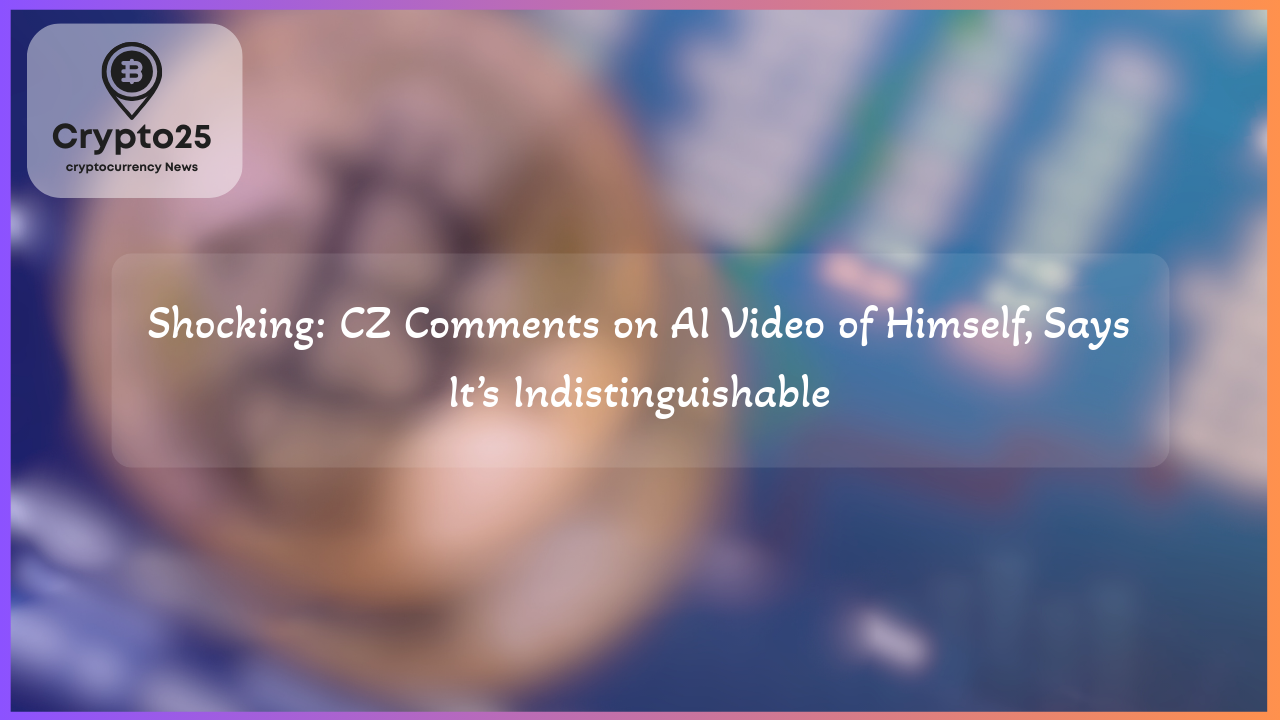
The rapid evolution of artificial intelligence is pushing the boundaries of what’s possible, but it’s also raising significant concerns, especially in the cryptocurrency industry. Changpeng “CZ” Zhao, former CEO of Binance, recently shared his alarming experience with an AI-generated deepfake video that mimicked his voice and facial movements with staggering precision. This incident not only highlights the dangers posed by deepfakes but also underscores the growing risk of AI abuse targeting the crypto ecosystem.
## Deepfake Technology Threatens Trust in the Crypto Sector
Deepfake technology poses a unique challenge to the crypto sector, where trust and security are paramount. Zhao’s AI-generated video, shared on X (formerly Twitter), exemplifies how advanced these tools have become. The video, which depicted him speaking in Mandarin, was so realistic that even Zhao initially struggled to distinguish it from an authentic recording. The convincing nature of this content renews concerns about AI tools being weaponized for fraud and unauthorized impersonations, especially as crypto pioneers like Zhao have been frequent targets.
Alarmingly, Zhao’s case is far from isolated. In 2023, Patrick Hillmann, Binance’s former Chief Communications Officer, revealed that scammers had successfully created a deepfake simulation of him and used it to lead meetings on Zoom. By combining publicly available footage, these actors crafted synthetic videos capable of deceiving project representatives into believing they were engaging with legitimate exchange executives. With deepfakes eliminating geographical barriers, impersonation tactics have expanded far beyond social media, enabling scammers to directly exploit crypto businesses and individual investors.
## The Alarming Rise of Voice Cloning in Fraud Cases
Voice cloning technology has reached unprecedented levels of accuracy, requiring only minimal input to create near-perfect imitations of a target’s voice. Once reliant on hours of audio, modern tools such as ElevenLabs now need under 60 seconds of recordings to generate a convincing clone. This breakthrough eliminates the roadblocks that once protected individuals from voice simulation scams. For instance, a February incident in Hong Kong saw $25 million stolen from a financial institution. Employees, misled by AI-generated visuals and voice simulations, believed they were taking instructions from their UK finance director during a Microsoft Teams call.
Data from cybersecurity firms reveals that these tools are becoming more sophisticated and accessible. APIs for voice-to-voice cloning are available on darknet platforms for as little as $5, placing powerful simulation capabilities in the hands of bad actors without oversight. While commercial AI tools incorporate watermarking or require user consent, open-source and illicit versions lack these safeguards, exacerbating the risks. This increasingly affordable technology leaves even seasoned professionals vulnerable to manipulation—for example, nearly 25% of UK adults reported encountering scams involving voice cloning in 2023.
| Title | Details |
|---|---|
| Market Cap | $1.2 Trillion |
| Deepfake Tools Cost | Starts at $5 (Darknet) |
The implications for crypto projects depend largely on increasing vigilance and the adoption of preventive tools. Fraud techniques are shifting quickly, moving from traditional scams to high-fidelity impersonations that can affect everything from investor relations to internal operations.
## Regulatory Gaps and Emerging Countermeasures Against Deepfakes
Unfortunately, regulatory frameworks addressing deepfake risks remain underdeveloped. For instance, while the European Union’s Artificial Intelligence Act mandates the labeling of deepfake content, it is not slated for full enforcement until 2026. This delay leaves plenty of room for scammers to exploit the lack of safeguards in regions where these tools remain unpoliced. Around the globe, there are limited measures requiring government or industry-led initiatives to reduce the harm caused by AI-powered fraud.
The bright side, however, comes in the form of emerging technological countermeasures. At the 2025 Mobile World Congress in Barcelona, several tech firms showcased device-embedded solutions aimed at identifying manipulated content in real-time. These tools, still in the prototype phase, promise to empower users to detect anomalies in audio and video. While external verification systems, such as forensic software, have historically been relied upon, the next wave of anti-deepfake technology aims to make protection more widely available and less cumbersome.
As the crypto industry continues to expand, there’s an urgent need for firms to adopt proactive defense strategies, combining cybersecurity tools with robust user education campaigns. Efforts to counter AI-driven fraud will need to evolve just as rapidly as the technology driving it in order to restore trust and mitigate the risks deepfakes pose to the industry.
The potential misuse of AI continues to grow, and the crypto space appears to be a high-stakes target due to the sector’s fast-paced nature and inherent value. Combatting these risks will require cross-industry collaboration, innovative detection tools, and the establishment of robust regulatory frameworks to protect those within the crypto ecosystem.
